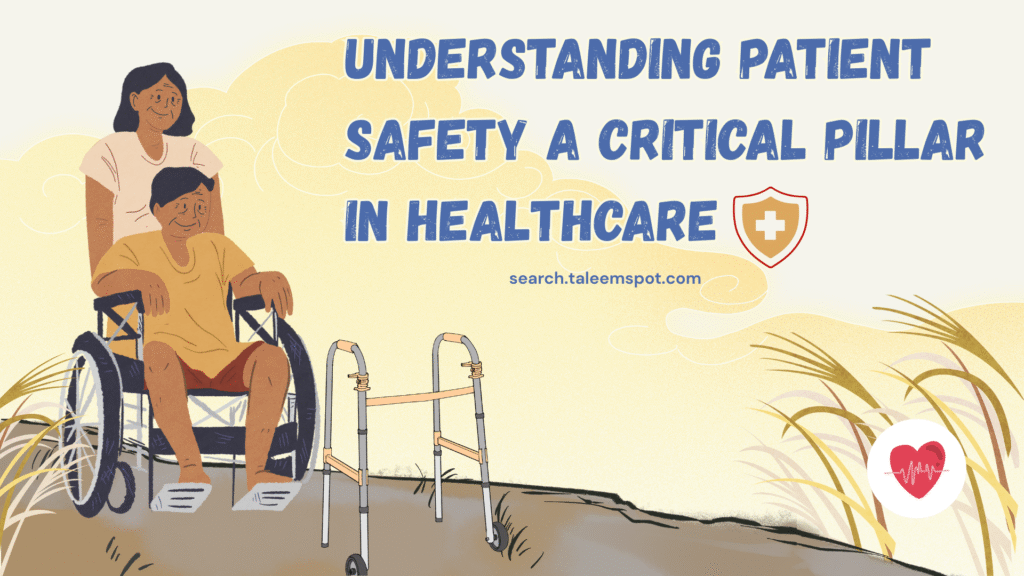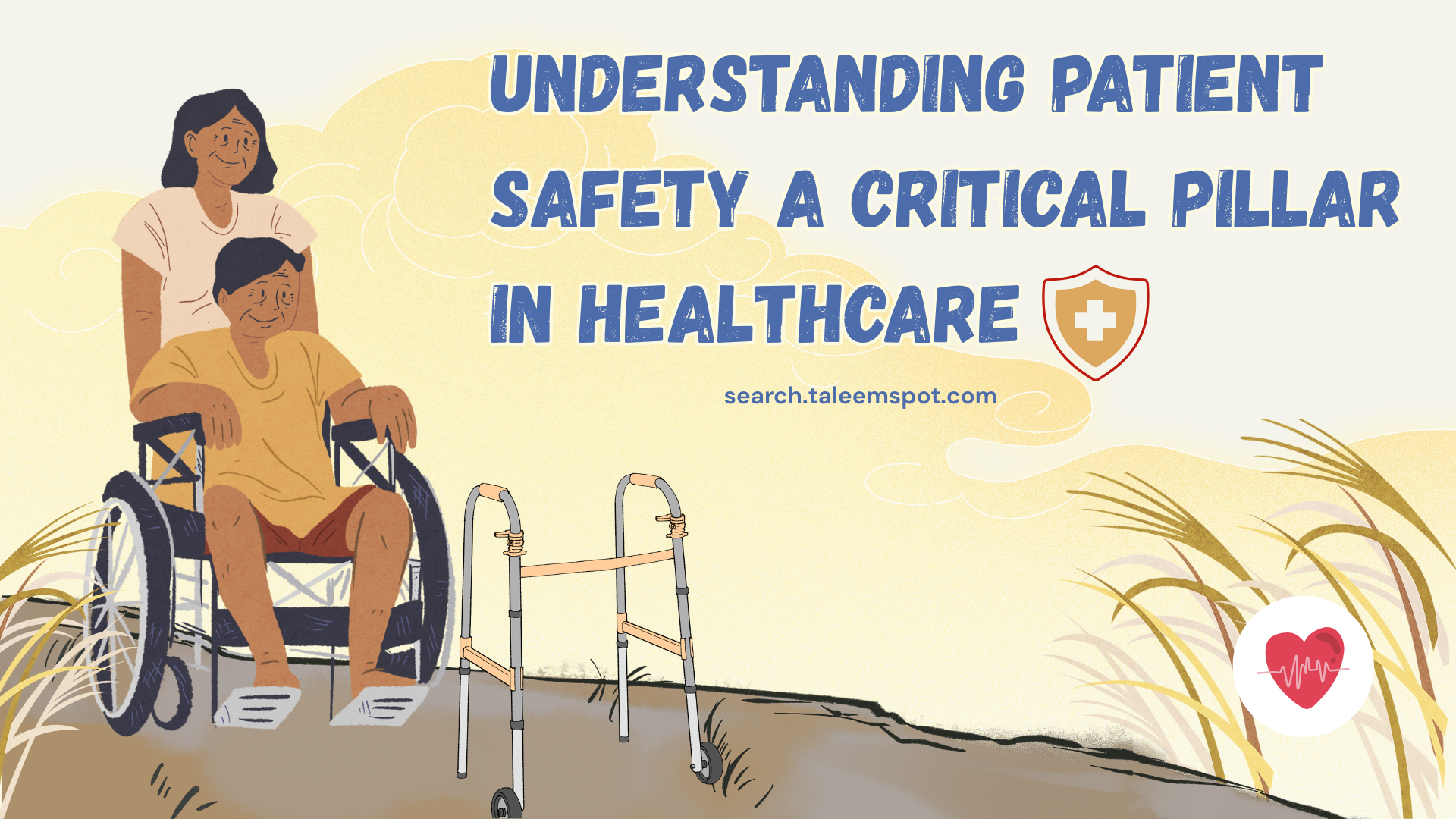Introduction
Patient safety is a fundamental cornerstone of high-quality healthcare. It refers to the prevention of errors and adverse effects associated with health care, ensuring that patients receive care that does not cause them harm. While medical advances have drastically improved health outcomes, they have also introduced complex systems that, when not managed correctly, can pose significant risks to patient well-being. Understanding patient safety involves exploring its definition, historical development, causes of harm, strategies for improvement, and the roles of healthcare providers, institutions, and patients themselves.
Historical Context and Evolution
The modern movement for patient safety gained momentum with the publication of the 1999 report To Err is Human by the Institute of Medicine (IOM) in the United States. The report shocked the public by estimating that nearly 98,000 people die annually in U.S. hospitals due to preventable medical errors. This brought unprecedented attention to the need for systematic change in healthcare delivery and emphasized the importance of building a culture of safety.
Following this, healthcare systems around the world began instituting reforms focused on improving safety through better training, transparent reporting systems, evidence-based protocols, and fostering open communication among healthcare teams.
Defining Patient Safety
Patient safety encompasses a wide range of practices aimed at reducing risks, errors, and harm that occur during the delivery of health care. It includes:
- Preventing adverse events: Harm resulting from medical care rather than the patient’s condition.
- Minimizing diagnostic errors: Mistakes in diagnosis or delays in identifying the correct health condition.
- Improving communication: Ensuring that care providers share accurate and timely information.
- Promoting safety culture: Creating an environment where healthcare workers feel empowered to speak up about risks and mistakes without fear of punishment.

Common Threats to Patient Safety
Patient harm can arise from a multitude of causes, often rooted in system-level failures rather than individual mistakes. Common threats include:
1. Medication Errors
These involve mistakes in prescribing, dispensing, or administering drugs. They are one of the most frequent causes of patient harm.
2. Surgical Errors
Wrong-site surgeries, retained surgical instruments, and post-operative infections represent significant safety concerns in surgical settings.
3. Healthcare-Associated Infections (HAIs)
Infections acquired during the course of treatment can have serious consequences, particularly in immunocompromised patients.
4. Diagnostic Errors
A wrong or delayed diagnosis can lead to inappropriate treatment, worsening patient outcomes.
5. Falls and Physical Injuries
Especially among elderly or mobility-impaired patients, falls in hospitals or care settings can lead to severe complications.
Strategies for Enhancing Patient Safety
Improving patient safety requires a multifaceted approach. Key strategies include:
1. Implementing Safety Protocols and Checklists
Standardized protocols, such as surgical safety checklists, reduce variability in care and help ensure critical steps are not overlooked.
2. Encouraging a Culture of Safety
A positive safety culture promotes teamwork, open communication, and non-punitive responses to error reporting.
3. Using Health Information Technology
Electronic Health Records (EHRs), computerized physician order entry (CPOE), and clinical decision support systems help reduce errors and ensure accurate, up-to-date patient information.
4. Engaging Patients and Families
Patients who are informed and involved in their own care are less likely to experience preventable harm. Encouraging patients to ask questions and participate in decisions is vital.
5. Continuous Education and Training
Ongoing professional development ensures that healthcare providers stay current with best practices and new safety guidelines.
Measuring Patient Safety
Monitoring and evaluating safety is crucial to improvement. Tools and methodologies include:
- Root Cause Analysis (RCA): A retrospective process used to identify underlying causes of adverse events.
- Failure Mode and Effects Analysis (FMEA): A proactive method to identify potential risks in healthcare processes before they cause harm.
- Incident Reporting Systems: Encourage staff to report near misses and adverse events to learn from them and prevent recurrence.
- Patient Safety Indicators (PSIs): Metrics developed by organizations like the Agency for Healthcare Research and Quality (AHRQ) to track safety performance.
Global Perspectives and Initiatives
Patient safety is a worldwide concern. Organizations such as the World Health Organization (WHO) have launched campaigns like the Global Patient Safety Challenge, focusing on hand hygiene, medication safety, and surgical safety.
Different countries have established their own safety programs:
- The UK has the National Patient Safety Agency.
- Australia promotes safety through the Australian Commission on Safety and Quality in Health Care.
- Canada implements best practices via the Canadian Patient Safety Institute.
The Role of Leadership and Policy
Healthcare leaders play a pivotal role in shaping safety cultures. Effective leadership ensures:
- Allocation of resources to safety initiatives.
- Support for transparent reporting systems.
- Enforcement of regulations and accreditation standards.
- Development of national policies that prioritize safety in healthcare agendas.
Policymakers must also ensure that patient safety is embedded in health care reforms, financing, and regulation.
The Future of Patient Safety
The future of patient safety lies in the integration of artificial intelligence (AI), machine learning, and predictive analytics to identify and mitigate risks before they manifest. Telehealth, robotics, and wearable technology also promise to enhance patient monitoring and reduce errors.
Moreover, patient-centered care models that prioritize personalized, compassionate care will play an essential role in advancing safety.
Conclusion
Patient safety is not merely a professional obligation; it is a moral imperative. Achieving and maintaining safety in healthcare requires the combined efforts of policymakers, healthcare providers, administrators, patients, and families. It involves building systems that are resilient, learning from mistakes without blame, and continually striving for excellence.
Only through a sustained commitment to safety at every level of the healthcare system can we ensure that health care does what it is intended to do: help, not harm.


